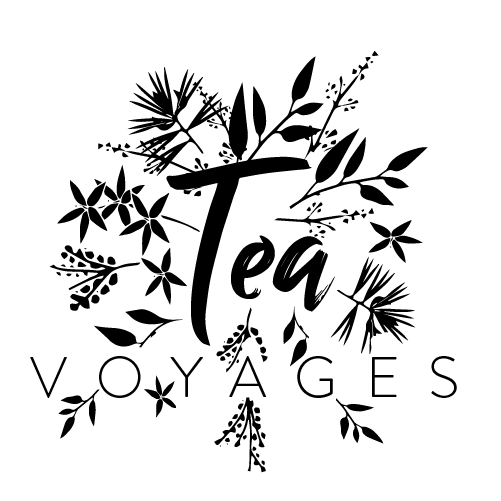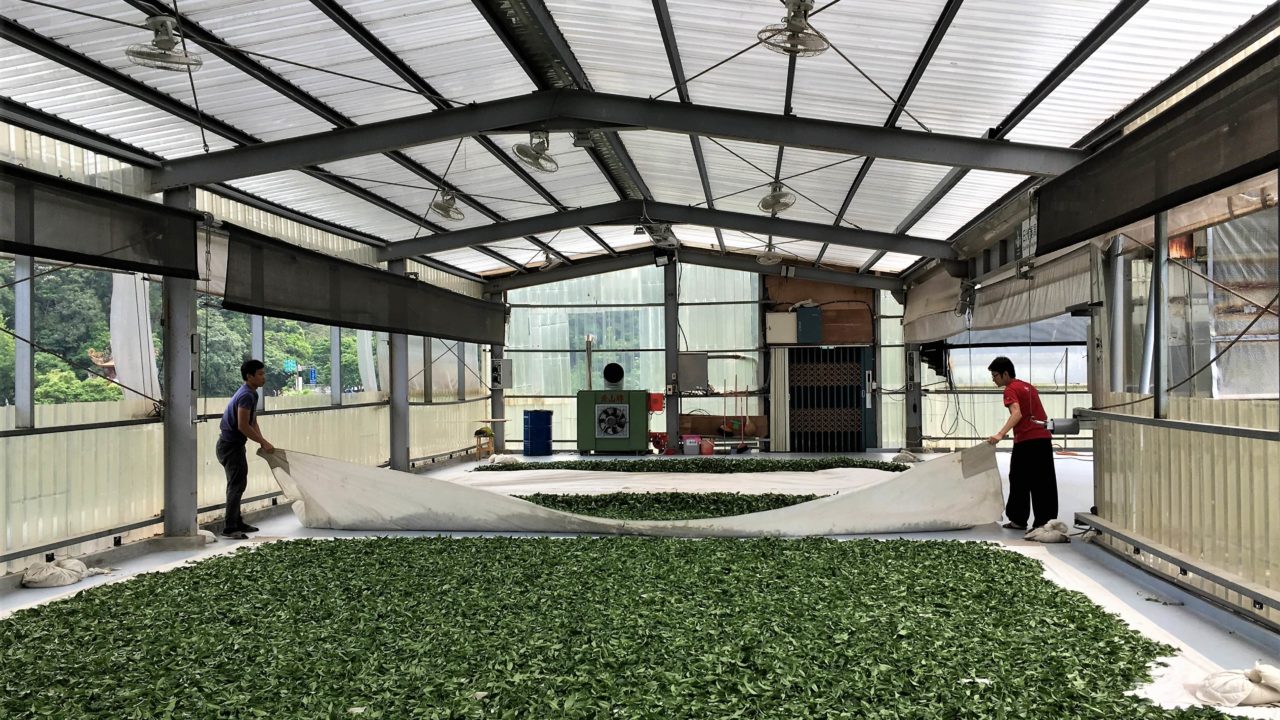Sustainability in the Tea Sector: A Brief Exploration
Une version française de cet article est disponible ici
If you pay attention to “fair trade” or “organic” labels when buying your tea, you might be interested to know that only 6% of the tea manufactured globally complies with voluntary-sustainability standards (1). You would neither be surprised that most of us tend to prefer organic tea products (2).
However, you might question the quality of the non-certified teas sold by your favorite tea seller… How does it compare? The short answer is: it might actually be as good as certified ones.
A panel of eight independent tea manufacturers and distributors located in Europe, Asia & Pacific regions shared their sustainability practices at the occasion of a research study conducted in 2020.
This article which summarizes their experience (and aims by no means to provide definitive answers) intends to guide tea lovers seeking quality product in the absence of any certification labels attached.
Put differently, if the tea you get at your tea shop meets the criteria listed below, chances are it was manufactured in good conditions.
Sustainability Practices: Selected Examples
These are some of the practices deemed sustainable adopted by the tea producers and distributors of our panel. They might also be the ones implemented in the farms and gardens your tea comes from.
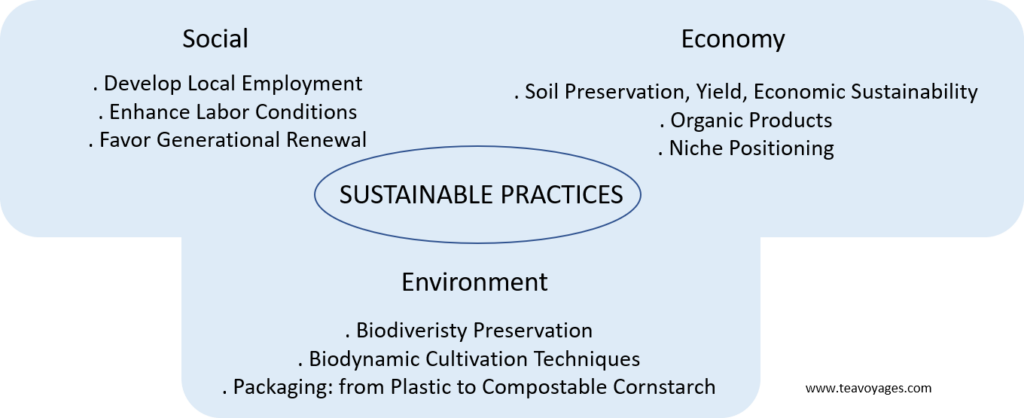
Let’s dive deeper into what each dimension entails!
Environment
Biodiversity preservation
Since the 1950s, the FAO (Food Agricultural Organization) has developed multiple conventions and programs aimed at coordinating targeted efforts in the agricultural sector.
In the tea sector, biodiversity preservation represents one of the many environmental dimensions taken in consideration by tea farmers.
The most frequent environmental-led practices pertain to: soil conservation, the types of intrants utilized, water quality, consideration of climate change.
Soil conservation pertains to practices that favor:
- their nutrient balance,
- the slowing down of their erosion,
- the local cycle of nutrients (organic matter and crops waste recycling),
- intercropping which includes crop diversification,
- soil maintenance.
Resource and input management include among other things:
- the level of pesticides,
- the level of energetic resources,
- pruning for plant health and quality,
- integrated pest management.
Water quality is assessed along the measures adopted for its preservation, as much for the crops than for the domestic use of laborers.
Biodiversity preservation pertains to:
- genetic diversity,
- diversity of species and plants,
- tree density
Climate change is assessed along:
- the conversion of natural land (e.g., prairie, forest, savanna) to land used for cultivation or pasture,
- or the conversion from cultivated or pasture land to natural land,
- the carbon stock (Number, size, type of trees and other perennial woody plants).
Explore Further
Source. https://thecosa.org/tea-indicators
Biodynamic Cultivation Techniques
Austrian scientist and founder of the Anthroposophy Society Rudolf Steiner (1861 – 1925) developed the core principles of biodynamics whose methods show similarities with organic agriculture practices but differ in their ontological tenets.
Biodynamic agriculture certifications are delivered worldwide. Demeter is to date the most renowned one.
Tea plants cultivation techniques that follow biodynamics principles include:
- The usage of composts,
- The absence as much as possible of chemical fertilizers and pesticides,
- The enhancement of clonal varieties so as to avoid overstraining the tea plants, as well as monocultures,
- Soil compensation with mulch and wood shavings.
Packaging: Shifting from Plastic to Compostable Cornstarch
Scented teas, such as Bergamot Earl Grey tea whether conditioned in tea bags or loose bags, are very often sealed with a thin plastic foil in order to maintain their natural aroma.
This plastic foil tends to progressively be replaced by compostable cornstarch. It cannot be considered as a panacea although experts acknowledge the enhancement.
Explore Further
Watch this report (in French) by France24 (2019)
In overall, climate change affects tea farmers who bear responsibility for taking appropriate measures aimed at mitigating greenhouse gas effect. Variations in crops quantity and quality require constant adjustment efforts.
If your tea farmer grows their teas according to the criteria listed above, as is the case of our panel, they could well be considered as sustainable-friendly from an environmental standpoint.
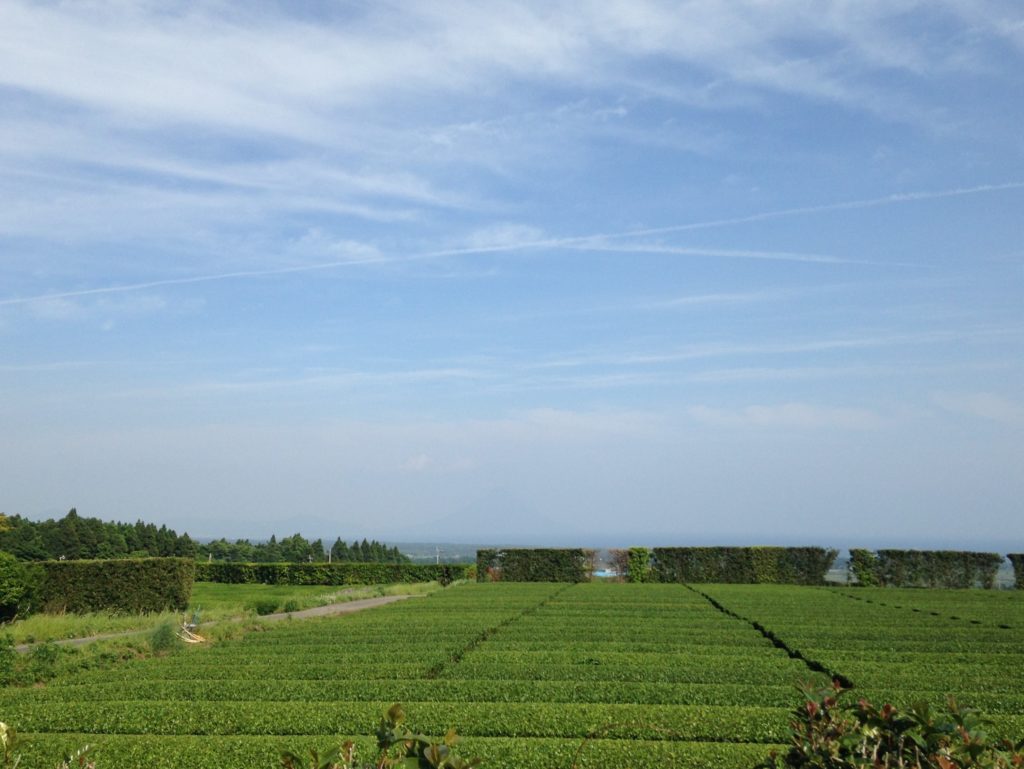
Social
Develop Local Employment
The seasonal activity in tea estates favors local employment.
Enhance Labor Conditions in Tea Estates
In the eye of the sustainability-orientated consumer, tea pluckers’ labor conditions stand among the most scrutinized aspect in tea estates where manual picking prevails.
However, the tea farmers in our panel focus their efforts on complying with organic agricultural standards enacted in the US, E.U. and Japan, as well as those established by national authorities.
The reasons for their showing less interest in fair trade certifications and labels (that are in contrast largely sought after by tea brands available in retail chains) include:
. Their agreed efforts exceed fair-trade certifications and labels standards. In large tea estates, labor conditions are subject to regular negotiations involving the local government, unions and company representatives;
. Studies have shown the actual and tangible yet relative impact of the fair-trade certifications in significantly enhancing pluckers’ living conditions;
. The cost of fair-trade certifications and labels is borne by producers, and could hardly be passed onto end-consumers.
Explore Further
FAO / Intergovernmental Group on Tea, 2018.
Fostering Sustainability in Tea Production and Trade: Assessing the Impact of Certification Schemes on Farm Income, Inclusive Rural Development and Market Access
Popular Republic of China
Qiao, Y., Halberg, N., Vaheesan, S. and Scott, S., 2016. Assessing the social and economic benefits of organic and fair trade tea production for small-scale farmers in Asia: a comparative case study of China and Sri Lanka. Renewable Agriculture and Food Systems, 31(3), pp.246-257.
Sri Lanka
Haagsma, B., Vredeveld, T., Yoosuf, A. and Maurice, D., 2016. External Evaluation of the UTZ Tea Programme in Sri Lanka. Fair and Sustainable Advisory Services, the Netherlands and Nucleus Foundation, Sri Lanka
Qiao, Y., Halberg, N., Vaheesan, S. and Scott, S., 2016. Assessing the social and economic benefits of organic and fair trade tea production for small-scale farmers in Asia: a comparative case study of China and Sri Lanka. Renewable Agriculture and Food Systems, 31(3), pp.246-257.
India > Assam
Biggs, E.M., Gupta, N., Saikia, S.D. and Duncan, J.M., 2018. The tea landscape of Assam: multi-stakeholder insights into sustainable livelihoods under a changing climate. Environmental Science & Policy, 82, pp.9-18.
Kenya
Prag, E., Skrydstrup, M., Gonzala, D.O., Lavoll, V., Dalum, S.B., Henriksen, A.S. and Visser, I. (2016). The effect of certification schemes and related trainings on sustainability in the tea production on small scale farms in Othaya, Kenya.
(This list of examples is non-exhaustive).
Favor Generational Renewal
The brisk manufacturing pace should not go unnoticed to visitors who ever have a chance to step into a production workshop during harvest seasons!
As a day job, tea manufacturing is demanding compared to other career paths offering more rewarding perspectives (but would they be deemed as fulfilling?, one might wonder). Soil work, seeding, multiple harvests throughout the year, heavy investments for equipment, constant cost control in the face of green tea price decline, specific skills required at each stage of the manufacturing process… along with respiratory and pulmonary risks, as well as other occupational diseases that previous generations of tea farmers know too well, especially in areas where monoculture and intensive cultivation predominate.
So, what does it take to maintain generational renewal? A part of the solution resides in developing schoolchildren’s interest for primary industries; young tea farmers embracing a more frugal lifestyle; the support of well-established producers.
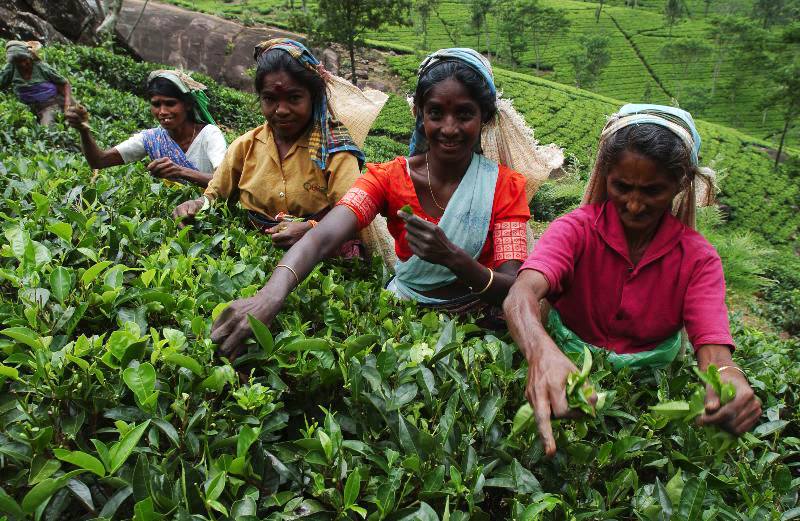
© David Lefranc https://www.facebook.com/davidlefrancphotography
Explore Further
The International Labor Organization regularly releases reports on the tea sector.
Economy
Soil Preservation, Harvest Yield, Economic Sustainability
According to the UK tea and infusions association, “in its wild state, tea grows best in regions which enjoy a warm, humid climate with a rainfall measuring at least 100 centimetres a year. Ideally, it likes deep, light, acidic and well-drained soil. Given these conditions, tea will grow in areas from sea level up to altitudes as high as 2,100 metres above sea level”.
Soil fertility is paramount to higher yields and farmland rates. However, the usage of chemical compounds degrades their geological properties. Therefore, soil preservation is a prerequisite for tea plants to follow through their natural cycle, thus contributing to higher harvest yield which is a key condition to the economic sustainability of tea farmers.
In this regard, researchers point at some producing countries where the usage of agrochemical substances generate soil erosion, jeopardizes water quality, and endanger pest management.
Explore Further
. Visit The UK Tea & Infusions Association website
. Potts J., Lynch M., Wilkings A., Huppé G., Cunnigham M., Voora V. (2014). The State of Sustainability Issues Review, 2014.
. Khoi, N.V., Lan, C.H. and Huong, T.L., 2015. Vietnam Tea Industry-An Analysis from Value Chain Approach.
. Gunathilaka, R.D. and Tularam, G.A., 2016. The tea industry and a review of its price modelling in major tea producing countries. J. Manag. Strategy, 7, pp.21-36.
. Tea2030. 2017. Managing Sustainability Sourcing Risk and Opportunities in Argentina at a landscape level: Workshop Report. July 2017
. Voegele, J. 2018. Farm and food policy innovations for the digital age. 11 October, 2018. Article en ligne.
Propose Organic Products
A growing interest in health-benefit organic products coupled with an inclination for a more stress-free lifestyle and a curiosity for new delectable flavors feed an increasing demand for organic tea products.
The three main international standards (US, Japan, EU) emphasize on the non-usage of non-natural intrants during the growth of the tea leaves and the manufacturing stages… In other words, no pesticide, no non-natural fertilizer or aroma is allowed. Some producing countries have enacted equally strict standards. One example is Taiwan’s Good Agricultural Practices, established in 2005.
Tea farmers who comply with organic agriculture standards offer higher quality products, are more easily able to raise their price and more likely to increase their revenues. Reversely, those who make use of chemical fertilizers or pesticides which affect soil and water, cannot obtain such certifications and are less likely to attract sustainability-orientated consumers.
A Niche Positioning
These various alternatives have led the interviewed SMEs to position themselves on marketing niches which can be based on, for example:
> Geography: Japanese green tea from Uji or Shizuoka; Taiwanese oolong from Nantou or High Mountains…
> The compliancy with one (or more) of the three international organic standards.
This differentiation strategy, coupled with high quality products and cost control, is crucial to tea farmers who need to stand out of the multiple general public brands.
As a Conclusion
Keep an eye on the stamps since they provide reassuring visual cues that are easy to spot. However, next time you go for a refill of your tea caddy, engage with the owner or experts of your favorite tea shop and ask about the cultivation methods. You might be surprised to learn how much care was put in crafting your tea!
Methodology
A research paper conducted in Spring 2020 for a master in management at Warwick Business School gave the opportunity to engage with eight SMEs of the tea sector, and examine how sustainability and digitization practices are carried out in their daily operations as well as in the development of new products.
The eight SMEs were selected: among 156 companies and brands that were rewarded by professional juries of fine food and fine teas contests between 2017 and 2020; and/or based on personal research and exchanges.
The final choice was based upon:
- the evaluations obtained in the aforementioned professional contests,
- the information available on their website and social media, as well as
- the uniqueness and novel character of their offering.
Selection of Sustainability & Fair Trade Organizations & Labels
Oxfam (UK)
Forum for the Future (UK)
Ethical Tea Partnership (UK)
Fairtrade (Pays-Bas)
Solidaridad (Pays-Bas)
Rainforest Alliance (USA, Pays-Bas)
Max Havelaar (Pays-Bas)
UTZ (Pays-Bas)
International Federation of Organic Agriculture Movements (IFOAM) (France)
Trustea (Inde)
Notes
(1) In 2016, only 6.6% of the global tea production was coluntary-sustainability standards compliant. Voora V., Bermúdez S., Larrea C. 2019. Global Market Report: Tea. Sustainable Commodities Marketplace Series 2019.
(2) According to the forecast shared by Data Bridge Market Research Organic, tea market is expected to grow at a rate of 6.10% in the forecast period 2020 to 2027 and is anticipated to reach USD 1.5 billion by 2027. Market Research Future claims that the global organic tea market is projected to reach approximately USD 1.3 billion by 2024.
